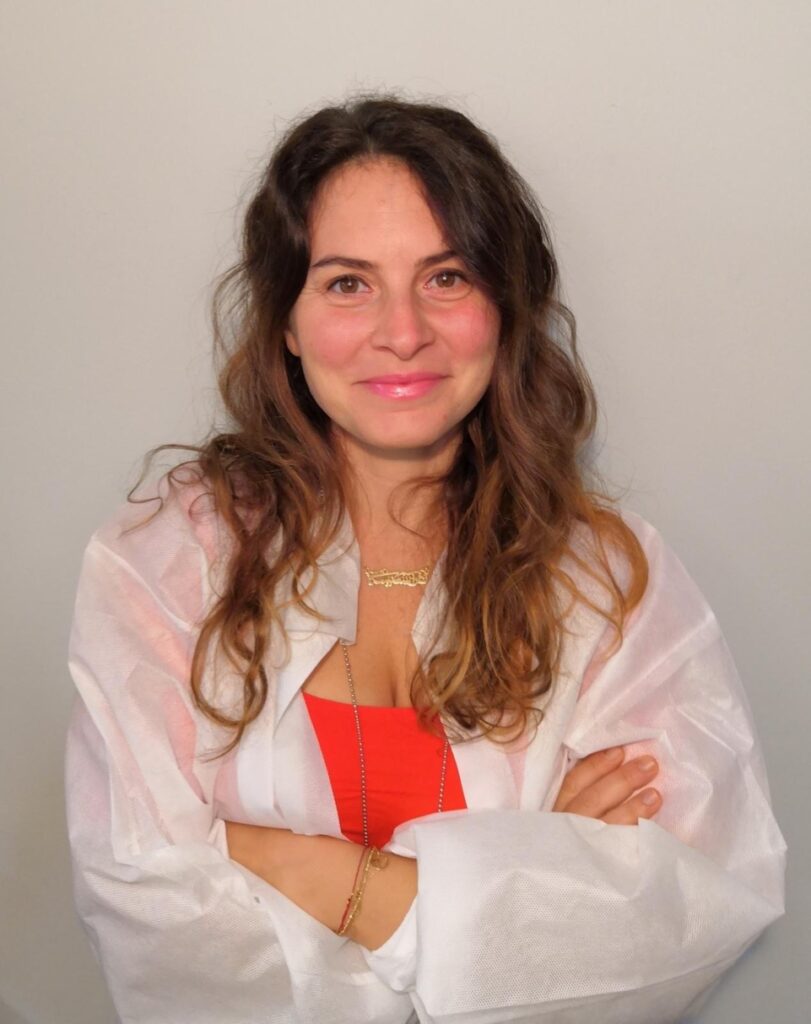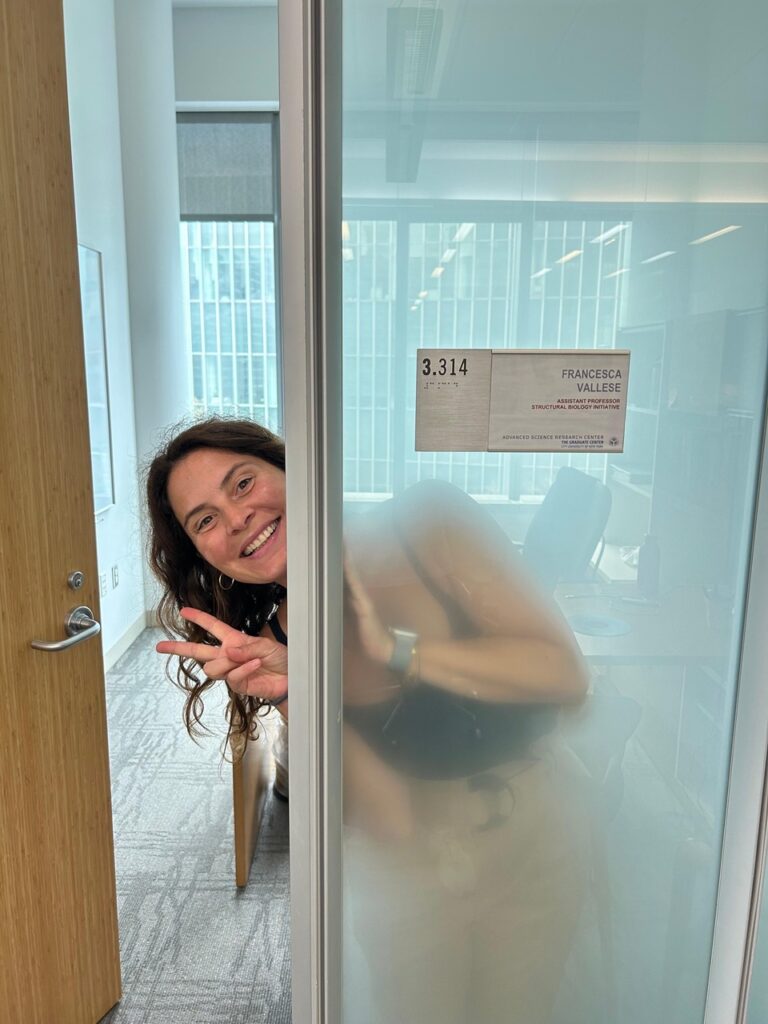For Dr. Francesca Vallese, pursuing structural biology wasn’t a plan — it was a discovery.
“I built my career — and also my love for what I’m doing — along the way,” she said. Now, she’s at the center of it all, leading a new lab at City College to uncover the structure of protein complexes to better understand how these molecules function in our bodies.

Dr. Francesca Vallese: Courtesy of Dr. Vallese.
Vallese began at City College on Sept. 1, when her structural biology lab officially opened at CUNY’s Advanced Science Research Center (ASRC) on CCNY’s campus. Before teaching Biochemistry in spring 2025, she’ll be spending this semester setting up her lab and preparing to begin experiments.
Structural biology deals in the ultra-small, answering the question of how the fundamental structures of molecules and their interactions give way to the biological complexity that makes life possible. In this sense, understanding diseases at their molecular structures is essential for designing drugs and therapies and developing vaccines.
Just across from the ASRC, structural biologists from around the country run experiments at the New York Structural Biology Center (NYSBC), also on campus. The center has a cornucopia of special instruments, including a cutting edge cryo-EM center (the Simons Electron Microscopy Center) — making it one of the most sought-after facilities for structural biologists globally.
“When I saw that there was a position available at the Advanced Science Research Center, I decided to apply, because, as I say, this is really the center of my field,” Vallese tells The RICC. “I wanted my research to be right in the middle of what is going on in the cryo-EM community.”
The term cryo-EM, or cryogenic electron microscopy, refers to a powerful, game-changing imaging technique used in structural biology to study the detailed structures of biological molecules, like proteins, viruses and cellular complexes.
Vallese said the United States’ advancements in cryoEM, especially in New York City, were what led her to move here from Italy five years ago after getting her PhD in Biotechnology at The University of Padova. She first became an expert in single-particle cryo-EM as a postdoc at Columbia, and now she’s excited to use the ASRC’s in-house cryo electron microscope, she said.

Dr. Vallese’s first day at the ASRC: Courtesy of Dr. Vallese
Vallese’s lab will give undergrad and graduate students as well as postdocs the opportunity to learn more about structural biology in a hands-on setting.
Vallese didn’t initially envision a career in structural biology, she said. She began her studies in biochemistry, but her search for better ways to visualize large protein complexes led her to cryo-EM. It was there that she realized her background in cell biology and biochemistry could come together, naturally guiding her toward a specialization in structural biology.
“When I was an undergrad, I was not able to think about my future in the long term,” Vallese says. “I didn’t know what I was going to be. But I built my career — and also my love for what I’m doing — along the way.”
Vallese’s research is now focused around the red blood cell, the specialized cell that carries oxygen from the lungs to the rest of the body and returns carbon dioxide from the tissues back to the lungs for exhalation. Her research plan, which she said will likely evolve further into the future, is for the lab to explore the ways anemia affects the cell’s shape, stability and function.
Anemia, the most common blood disorder, happens when the body has an insufficient number of healthy red blood cells. One-fourth of the global population is estimated to be anemic with effects that can range from mild to severe. Vallese studies a complex of proteins called ankyrin-1 complex, which lie on the red blood cell’s surface and give the cells their particular biconcave shape.
For students pursuing structural biology, whether at the undergraduate or graduate level, Vallese says to aim high, and don’t be afraid to fail.
“Dream big,” she says. “The worst-case scenario is that maybe an experiment doesn’t work, but who cares? Try and dream big.”
Judah Duke is a journalist who graduated from CUNY Baruch College in 2024 with a degree in Journalism. He has reported on business, real estate and the environment across Texas and New York City and is currently pursuing a master’s degree at Columbia Journalism School, specializing in investigative reporting.